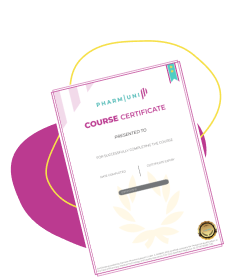CSV in Pharma (Computer System Validation)
Definition
CSV in pharma, or Computer System Validation, is the documented process of ensuring that computerized systems used in pharmaceutical manufacturing and quality operations consistently perform as intended, in compliance with regulatory requirements such as Good Manufacturing Practice (GMP) and Good Automated Manufacturing Practice (GAMP).
CSV is essential for maintaining data integrity, product quality, and patient safety. It is a critical component of compliance with global regulatory standards, including those set by the FDA, EMA, and other health authorities.
Detailed Explanation
Purpose of CSV in Pharma
Computer System Validation ensures that software and hardware systems used in regulated environments operate correctly and reliably. In the pharmaceutical industry, these systems manage everything from manufacturing processes to laboratory data and electronic records. CSV provides documented evidence that these systems meet their intended use and can be trusted to produce accurate and repeatable results.
Why CSV is Important
- Regulatory Compliance: Regulatory bodies such as the FDA (21 CFR Part 11) and EMA require validated systems to ensure data integrity and patient safety.
- Risk Mitigation: Validation helps identify and mitigate risks associated with software failure, which could lead to product recalls or patient harm.
- Data Integrity: Ensures that data captured, stored, and reported by systems is accurate, consistent, and secure.
- Audit Readiness: Provides documentation and traceability to demonstrate compliance during inspections and audits.
Key Steps in CSV Process
The CSV process typically follows a lifecycle approach, which includes the following phases:
- Planning: Develop a validation plan outlining scope, responsibilities, and deliverables.
- Requirements Definition: Define User Requirements Specifications (URS) to identify what the system must do.
- Risk Assessment: Evaluate potential risks and determine the level of validation effort needed.
- Testing: Conduct Installation Qualification (IQ), Operational Qualification (OQ), and Performance Qualification (PQ).
- Documentation: Maintain detailed records of all validation activities, including test scripts and results.
- Change Control: Implement procedures to manage modifications to the system post-validation.
Applications of CSV in Pharma
Computer System Validation is applied across various domains in the pharmaceutical industry, including:
- Manufacturing Execution Systems (MES)
- Laboratory Information Management Systems (LIMS)
- Enterprise Resource Planning (ERP)
- Quality Management Systems (QMS)
- Electronic Document Management Systems (EDMS)
CSV vs. Computer Software Assurance (CSA)
In recent years, the FDA has promoted a shift toward Computer Software Assurance (CSA), a risk-based approach that emphasizes critical thinking and testing only what matters for patient safety and product quality. However, CSV remains the standard approach until CSA is more widely adopted.
Common Challenges in CSV
- Over-documentation: Excessive paperwork that doesn’t add value.
- Changing Regulations: Keeping up with evolving global standards.
- Legacy Systems: Validating older systems that weren’t designed with compliance in mind.
Best Practices
- Use risk-based validation approaches aligned with GAMP 5 guidelines.
- Maintain traceability between requirements, tests, and results.
- Ensure cross-functional collaboration between IT, QA, and business users.
- Automate validation documentation where possible to reduce errors and save time.



